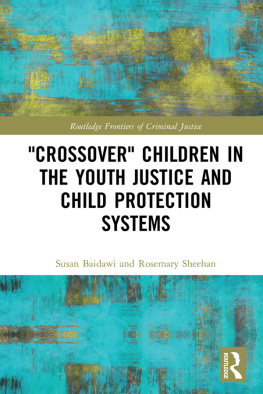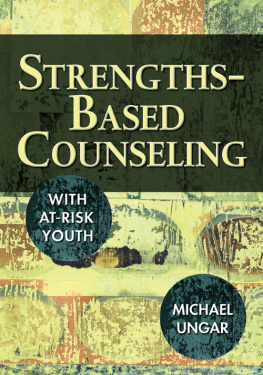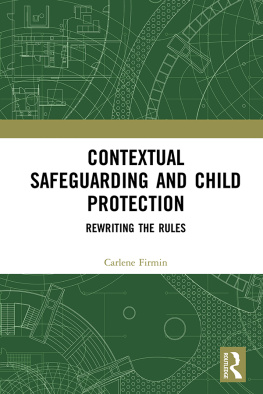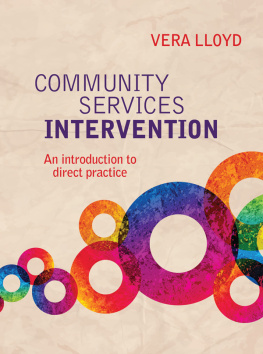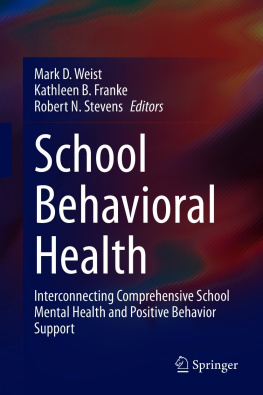
Working with High-Risk Youth
Smyth speaks with the authority of someone who has spent his career on the front-lines of practice. More than just an easy to access summary of the theory of resilience, this book shows what it takes to reach out to our most vulnerable young people and engage them in the services they want and need.
Michael Ungar, Dalhousie University, Canada
In the child welfare system some youth do well in their lives, but far too many do not experience positive outcomes by the time they are leaving government services. The youth often feel marginalized and that they were not involved in decisions about their own lives, leaving them with a sense of hopelessness and helplessness. This book focuses on high-risk youth whose struggles include neglect and abuse, alcohol and drug abuse, the risk of being exploited, mental health issues, and the inability to self-regulate and trust a population of youth that government child welfare services and community agencies struggle to serve adequately. The focus has traditionally been on punishment consequence interventions and demanding compliance, but experience and research shows they can be better served through relationship-based practice incorporating harm reduction principles, resiliency and strength-based approaches, community collaboration, and an understanding that these youth typically come from experiences of early trauma impacting their brain development and their ability to form attachments. This book provides an overview of the Get Connected practice framework and philosophy, and provides strategies for engaging and working with the most disconnected, challenging, and troubled youth in society.
Peter Smyth, M.S.W., R.S.W., has been a social worker for over 27 years and is currently with Alberta Human Services, Edmonton Region Child and Youth Services Division, overseeing the High Risk Youth Initiative. From 2005 to 2012, he was the supervisor of the High Risk Youth Initiative. He developed a practice framework and philosophy incorporating non-traditional intervention methods to better meet the needs of this challenging population. Prior to this, he supervised the Inner City Connections partnership between government and inner-city agencies. He is a co-founder of the Old Strathcona Youth Society in Edmonton, Alberta, which has served homeless and disadvantaged youth since 1998. He has written about issues confronting youth and provides consultation, training, and workshops on engaging and working with youth and understanding youth through an attachment, trauma, and brain development lens. He is also a part of the committee organizing the Allies for Youth Connections Conference (formerly the High Risk Youth Conference) which takes place every two years in Edmonton, Alberta, Canada. Peter is a sessional instructor at the University of Calgary, Faculty of Social Work, Central and Northern Alberta Region. Peter is married and has four children.
First published 2017
by Routledge
2 Park Square, Milton Park, Abingdon, Oxon OX14 4RN
and by Routledge
711 Third Avenue, New York, NY 10017
Routledge is an imprint of the Taylor & Francis Group, an informa business
2017 Peter Smyth
The right of Peter Smyth to be identified as author of this work has been asserted by him in accordance with sections 77 and 78 of the Copyright, Designs and Patents Act 1988.
All rights reserved. No part of this book may be reprinted or reproduced or utilised in any form or by any electronic, mechanical, or other means, now known or hereafter invented, including photocopying and recording, or in any information storage or retrieval system, without permission in writing from the publishers.
Trademark notice: Product or corporate names may be trademarks or registered trademarks, and are used only for identification and explanation without intent to infringe.
British Library Cataloguing-in-Publication Data
A catalogue record for this book is available from the British Library
Library of Congress Cataloging-in-Publication Data
A catalog record for this book has been applied for
ISBN: 978-1-138-23447-5 (hbk)
ISBN: 978-1-138-23449-9 (pbk)
ISBN: 978-1-315-27004-3 (ebk)
Typeset in Sabon
by Apex CoVantage, LLC
This book is dedicated to the many youth with whom I have crossed paths over the years. It is also dedicated to my parents, Terry and Laurie Smyth, who taught me what a privilege it is to serve others.
This book was a labour of love, but just like good practice in the helping professions, this did not happen in isolation. My first big thank you is to my daughter Kiara Smyth who, using her amazing teaching skills, came along on this journey with me and edited the first draft of the book. We agonized over commas, argued over what did and did not make sense, laughed, got unfocused and silly, and stayed up way too late on many occasions. I will remember these days very fondly. Thanks so much to my wife, Cheryl, and other three kids, Conor, Braden, and Jenna, who supported me through this process and were probably more patient than they needed to be. I love you all. I was also blessed with the support and encouragement of my sisters Geraldine, Catherine, and Clare, and my brother Kevin.
Thanks to my good friend, Arlene Eaton-Erickson. You were with me through the earliest days of the High Risk Youth Initiative starting in 1999, and you continue to give to me the gift of your wisdom, ideas, and time. Our chats continue to inspire my thinking and evolve my practice. The concepts in this book would not have developed without your input, openness, and thoughtfulness. A big thanks also to my many colleagues who were part of the early days in the High Risk Youth Unit I supervised for seven years. Breaking new ground with such dedicated professionals was a brilliant experience and the memories will stay with me forever. Being surrounded with like-minded people, working in the government or in the community, made this tough work not only worthwhile, but it felt like we could actually change practice in our child welfare system. It has been a blessing to have you journey with me over these many years: Heather Peddle, David Rust, Frank Wingrove, June Emery, Jean Lafrance, Karen Bruno, Karyn Schultz, Renee Sullivan, Brianna Olson, Wallis Kendal, Diane Conrad, Catherine Broomfield, Marliss Taylor, Rebecca Edwards Rabiey, Mandy Halabi, Karen Drynan, Larisa Jeffares, Fayanne Perry, Mark Cherrington, Barb Dewalt, Sherrie Young, my sister Clare Smyth, and so many others. Thank you to all of the workers, supervisors, and managers in the bigger High Risk Youth Initiative in Edmonton, again whether you work for the government or with one of the many dedicated community agencies. Your passion for working with youth, your ongoing support, and your willingness to take risks is always inspiring and appreciated.
Thank you to the managers who supported me and had faith, in particular Al Failing, who gave the go-ahead for the first high-risk youth caseload; Cheryl Hartshorne, who pushed to expand the initiative; Michelle Sandquist, who helped the initiative through some tough times; Sheli Steil, who was a genuine ally; and Lisa McDonald, who truly understood the bigger picture and pushed me to keep writing. Thank you to the many others who were open to trying new things and learning with me.
I am indebted to all of the youth I have known over the years, whether working with them directly or indirectly. In particular, I want to thank those of you who contributed to the book in different ways, including Alysha, Melissa, Meagan, Sonja, Aimee, Kathryn, Little Nicole, Lori, Kyla, Leanne, Candace, Jen, and Cory. You will never know how much you taught me and just how truly grateful I am.


